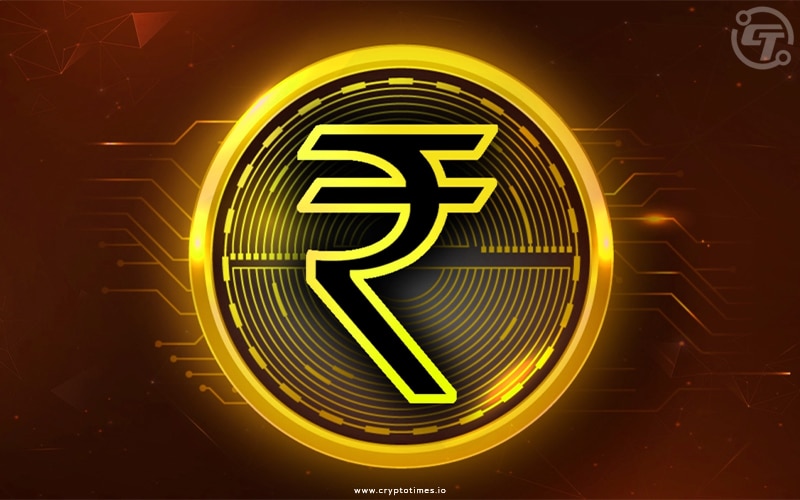On its way to becoming the third-largest economy in just a few years, India as a nation leaves no leaf unturned when it comes to adapting to and leading the pathway for breakthrough technologies. This became especially prevalent as the RBI announced its intentions to harness the power of blockchain and introduce its own digital currency in 2022—one of only 10 countries globally to do so.
Now this announcement, although progressive and a prominent leap in the global fintech space, has left a lot of people confused.
Is e₹ a cryptocurrency? Can it be liquidated into cash? How is it different from UPI? And most importantly, what is its purpose in the Indian economy?
The Digital Rupee
The Digital Rupee (e₹) or eINR or E-Rupee is a tokenized version of the Indian Rupee (INR). It is a digital form of traditional currency. Those currencies that are completely electronic are called digital currencies. This includes Central Bank Digital Currencies (CBDCs) like eINR, cryptocurrencies, etc.
A fundamental feature of e-rupee is the use of blockchain. While it is still regulated and backed by the RBI, eINR is transacted on and documented on a digital ledger. It harnesses the transparency, security, and efficiency of blockchain technology. Moreover, eINR is exempt from any crypto taxes.
eINR vs. UPI
While UPI is a way to transact currency digitally, the digital rupee is a digital currency in and of itself. In other words, conventional currency (INR) is transacted via UPI, and digital currency (eINR) is transacted without using financial intermediaries as middlemen. CBDC leverages DLT (Distributed Ledger Technology) to process transactions that provide higher security, immutability, and transparency.
Additionally, in true blockchain fashion, anonymity is kept intact with digital currency, while banks have a ledger of all their users’ transactions made through UPI. Most recently, SBI rolled out its feature of UPI interoperability with the digital rupee as part of the Reserve Bank of India’s (RBI) CBDC programme.
Role of Commercial Banks in eINR
The RBI distributes the required number of tokens to intermediaries called Token Service Providers (TSPs). The banks will acquire the tokens from the RBI via the TSP merchants. Needless to say, the issuance of digital rupee will be processed online.
You have the flexibility to obtain digital tokens from your bank just as you would withdraw physical currency. The conversion of your cash assets into the desired e₹ format can be seamlessly executed through the Unified Payment Interface (UPI) payment gateway. Certain financial institutions might even enable immediate transfers from your bank account to your digital wallet.
The project, currently still in the pilot phase, has nine participating banks. This includes State Bank of India, Union Bank of India, HDFC Bank, Yes Bank, Bank of Baroda, ICICI Bank, HSBC, IDFC First Bank, and Kotak Mahindra Bank.
The pilot phase for wholesale commenced on November 1, 2022, and for retail on December 1, 2022. Five more banks, namely Punjab National Bank, Canara Bank, Axis Bank, Federal Bank, and IndusInd Bank, have also been identified to participate in the project. Among these, Canara Bank already launched its UPI-linked digital rupee app last month.
eINR vs. Cryptocurrency
While both eINR and crypto are forms of digital currencies, they vary vastly in their regulatory frameworks.
The main characteristic of crypto is its decentralization. Without it, crypto loses its widespread appeal. E-rupee, on the other hand, is backed and regulated by the RBI.
In essence, in order to avoid the volatility and potential for fraud and money losses that come with crypto, the RBI will regulate the prices and provide conventional value to the currency, similar to that of INR. This digital currency is fully centralized.
Notably, earlier this year, RBI Governor Shaktikanta Das stated that cryptos should be fully banned and that they are nothing but a “gamble”.
Why the Digital Rupee?
While the RBI has publicly stated its overall negative views on crypto, it has also proclaimed its optimism and bullish sentiment towards the robust technology that is blockchain.
According to RBI, “Blockchain Technology (BCT) is one of many promising technologies and its usefulness will depend on how it is adopted and adapted to a wide array of uses.”
With this in mind, the central bank adopted CBDCs in order to harness the power of blockchain in its legal tender. To advance its digital currency initiatives, the RBI tapped 18 nations in July 2023, to explore the potential of cross-border transactions using digital rupees.
Advantages of the E-Rupee over the Indian Rupee
- The RBI does not have to bear the operational and printing costs that come with traditional currency. Along with printing, these costs include transport and storage costs that come with physical cash.
- eINR transactions are instantaneous and available 24/7, unlike banks that have limited working hours and working days. Additionally, international transactions are faster and more efficient.
- There’s no risk of forging with a digital currency, as it is supported by the transparency that a digital ledger provides. According to RBI reports, instances of fake note transactions have increased over the years 2022-23.
- The RBI employs robust security measures, including cryptography and quantum computing-resistant systems, to safeguard the integrity of your digital tokens. Additionally, every token is assigned a distinct identification number to deter any attempts at counterfeiting. This unique feature also enables wallet providers to restore the total value of your digital tokens should you ever lose your device.
Read more: SEC Chair Gensler Questions Need for More Digital Currency
The current status of eINR: is it scalable?
According to the RBI’s annual report, as of March 31, 2023, the total value of the digital rupee in circulation stood at Rs 16.39 crore. For comparison, the value of banknotes in circulation was Rs. 33,48,228 crore, and the value of coins was Rs. 30,242 crore.
Clearly, there’s a long way to go as far as wide-scale adaptability (or even general awareness, for that matter) is concerned. Scalability, regulatory and privacy frameworks, operational standardization, and technological considerations are four key areas that the Central Bank needs to put its utmost focus on.
The prerequisite technology required for the deployment of the digital rupee might still be too expensive for commercial banks to employ, as they still do their own cost-benefit analysis of adopting different products. As India moves forward with the CBDC project, top banks are expanding their digital services, with HDFC and ICICI Bank taking the lead. Moreover, the government can also work on incentivizing these pieces of technology for better scalability.
For it to be especially appealing to the masses, the digital wallet must have a user-friendly interface in addition to a multi-lingual and convenient display.
However, if the government succeeds in implementing the required policies and setting up cyber security infrastructure, INR can be a massive success. India will be perceived as a global leader in the fintech landscape and truly secure its place if it happens to make the digital rupee inclusive and accessible to the general public. While it’s still a far-fetched dream, the potential of the digital rupee is limitless.







